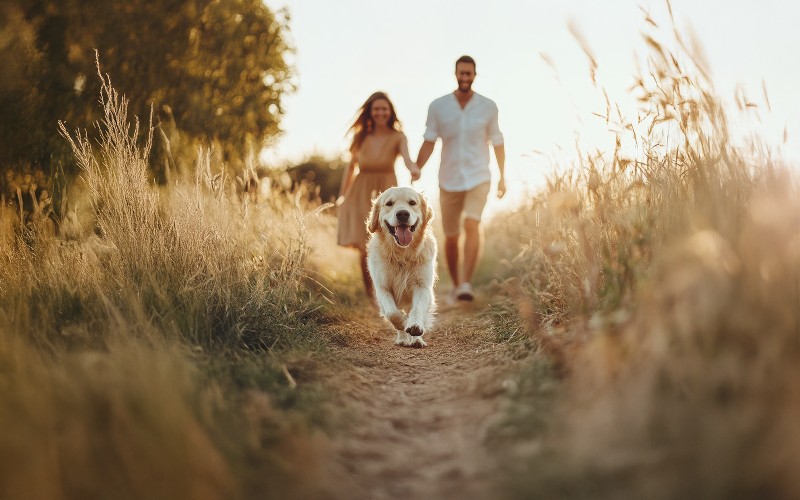
Walking Your Dog in Summer – What You Need to Know
Have you ever thought, “It’s way too hot… what am I supposed to do with my dog now?” You are definitely not alone.In summer, many pet parents face a tricky balance: dogs full of energy like batteries on overdrive, and weather that even makes the idea of walking unbearable. Others deal with dogs who wouldn’t leave the air conditioning even for a kilo of steak.
That’s why we have put together this short guide on how to manage your dog’s walks during the summer.
How to plan summer walks
During hot weather, try to go out early in the morning or late in the evening.
These are the coolest parts of the day, and you can give your dog more variety in activities, like exploring shaded areas or nearby parks.
If you live in an urban setting, avoiding hot asphalt is key. Pavement can reach dangerously high temperatures and harm your dog’s paws. You can protect their paws with balm, dog boots or, when possible, by sticking to grassy or dirt paths.
What about the rest of the day?
During the hottest hours, it’s best to keep walks short and functional, just enough for bathroom breaks, and plan some fun activities at home.
Fun alternatives at home
There are many ways to keep your dog mentally active indoors.
Here are a few ideas:
- Scent games, like hiding treats or using snuffle mats
- Nose work or search-based games
- Short training sessions using positive reinforcement
Watch out for temperature changes!
Moving from cool environments (like an air-conditioned house or car) to the outdoor heat can be risky due to temperature shock. Here's how to help your dog adjust more gradually:
- Open windows while keeping the AC on to balance the air
- Slowly turn the AC down
- Once the indoor and outdoor temperatures feel closer, let your dog go outside
- Avoid blasting cold air directly on them
- Let them rest in a ventilated but not overly cold space
- Allow a few minutes in a neutral-temperature area before moving to a cooler one
With a little planning and care, summer walks can still be enjoyable and safe. Respecting your dog’s needs, adjusting your routine, and staying alert to signs of discomfort will help you both make the most of the season, even when the sun is blazing.

